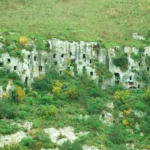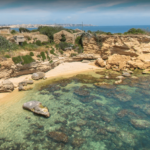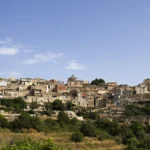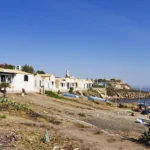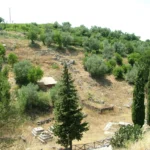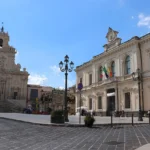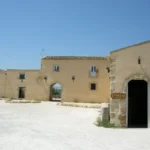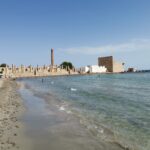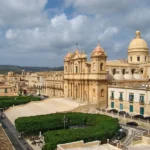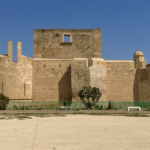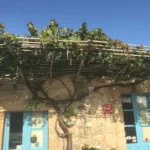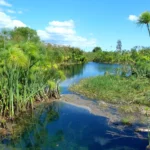Last Updated on 10 February 2025
Introduction
Before we find out what to see in Syracuse, I will tell you very briefly about its History. The city was founded by the Greeks in the 8th century B.C. and named it Syrakó. The Greek soul of Syracuse can still be felt today, walking in the archaeological park and through Ortiga, the island that houses the historic center of the city. Also born in Syracuse was Archimedes, who contributed his warlike inventions to defeat the Athenians who tried to conquer the city.
What to see in Syracuse
1. Neàpolis Archaeological Park of Syracuse

The Archaeological Park was built in the 1950s, saving this area from the urban expansion that Syracuse had during those years. It is certainly one of the largest and most important archaeological parks in the world and mainly preserves monuments of great depth, from the Greek and Roman era.. It is one of the things to see absolutely in Syracuse.
S. Nicolo dei Cordari
The church is immediately noticeable as soon as you enter the Archaeological Park of Syracuse and is of Norman origin. The name Cordari refers to the rope makers who worked in the nearby quarries. Under the church there are large water tanks, which were used by the Romans to fill the nearby amphitheater with water and thus prepare the water fights.

Roman amphitheater
The amphitheater is third in Italy in size after the Colosseum and the Verona Arena. It was built by the Romans, who unlike the Greeks used it for quite other purposes. In fact, here gladiators clashed and fought against large predators, brought here from Africa. Unfortunately, Charles V used the theater as a building material for the fortifications of Ortigia, but in many parts it is still intact. It is even possible to read in some stones the names of the owners of the places.
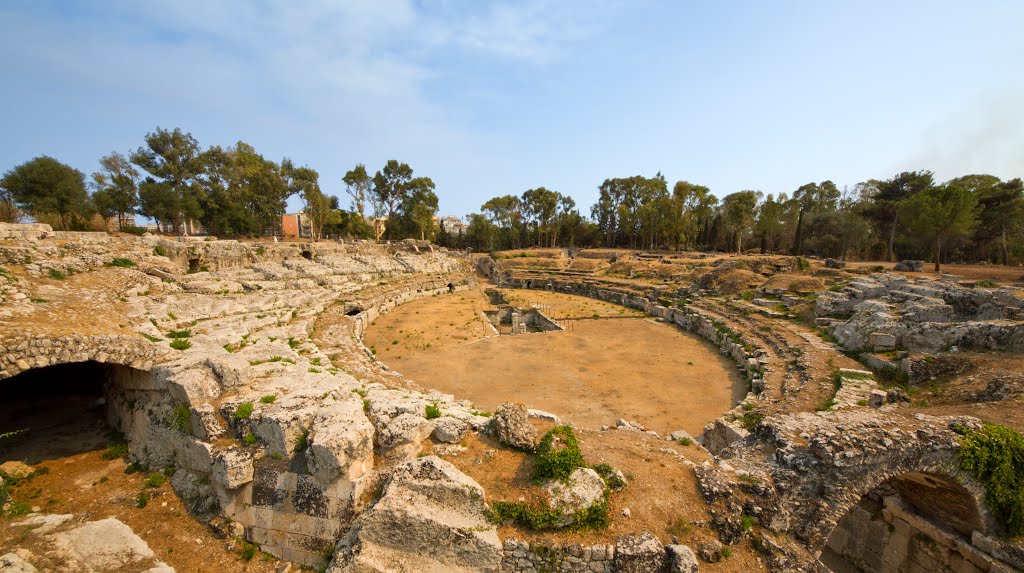
Via dei Sepolcri
The Via dei Sepolcri is located near the Greek theater. A path about 150 meters long that opens between the rocks. Caves have been dug right into the rocks, where the Greeks buried the dead. They were important people, who had distinguished themselves in life and therefore were deserving of a worthy burial. These places were also used by the Byzantines as a place of worship and in the road you can see the furrows left by the chariots, a sign that this road was traveled for many centuries.

Altar of Hieron II
This huge sacrificial altar was built by Hieron II in honor of Zeus and during the celebrations, which took place every year, 450 bulls were sacrificed. The building, of which today only the rocky base remains (The rest was destroyed by the Spaniards in the 16th century), was truly impressive, reaching a length of 198.40 meters, the length of an Olympic stadium.
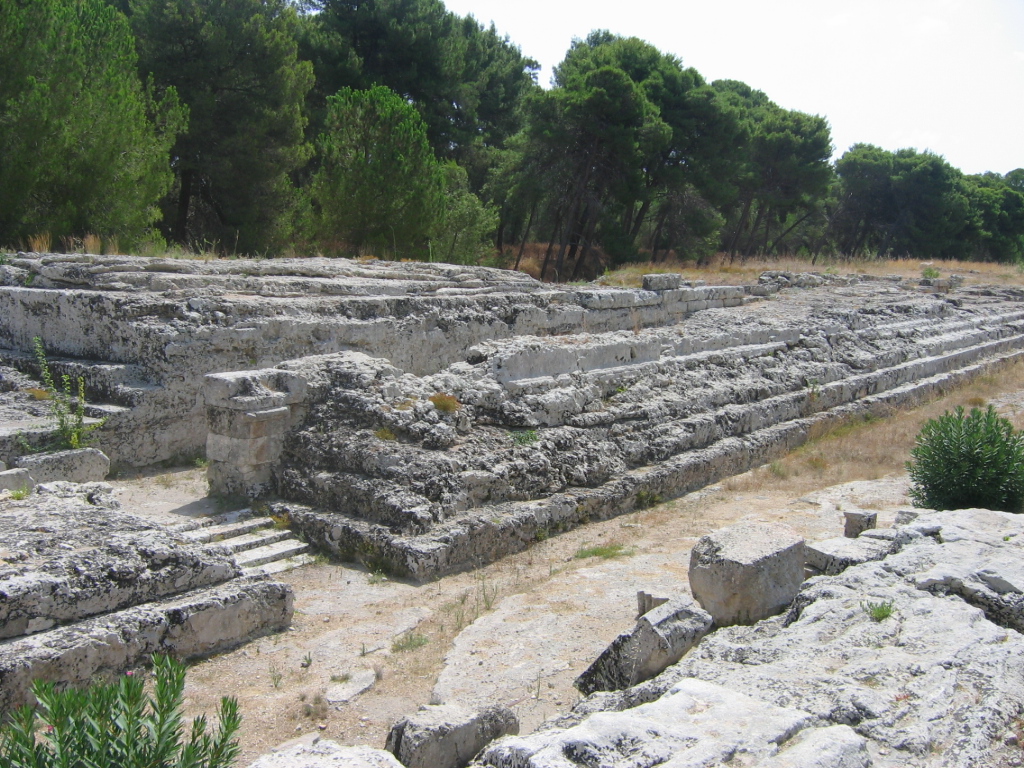
3D construction of the Ara:
Greek Theater of Syracuse
Here is the largest Greek theater in the world which was built by Hieron II in the third century BC . Here theatrical performances and people’s assemblies took place in a wonderful natural setting with a sea view. The theater has been preserved quite well, especially the part carved into the rock, while the raised tiers, built in blocks, no trace remains. The theater was also modified later by the Romans, as in the case of the beautiful Greek theater of Taormina and it was also partially destroyed by Charles V in 1526 who had the marble removed, to be used as building material for the fortifications of Ortigia.
Curiosity: Every year between May and June, theatrical performances are organized in the Greek theater, which stage Greek tragedies. When I went to school they would sometimes take us to see Greek plays, and I can assure you that it is really a sight to behold. Imagine sitting in the same place, where millennia ago the Greeks admired their plays! Here you will find more information about it: https://www.indafondazione.org/
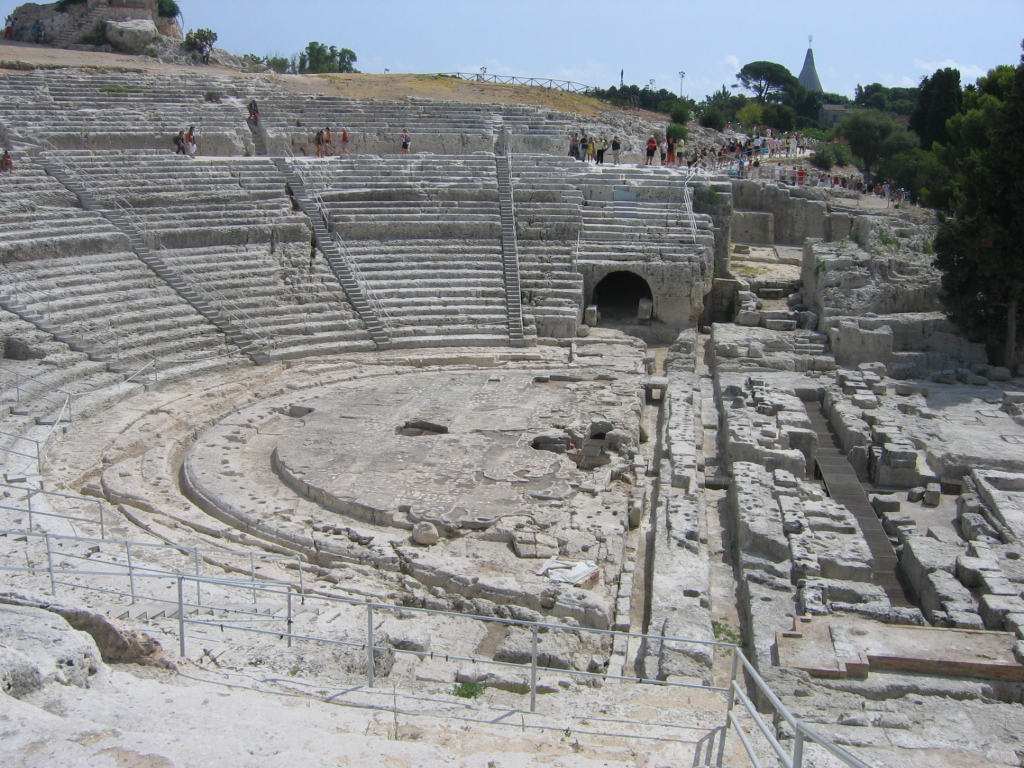
Here is a 3D reconstruction of the Greek theater of Syracuse:
Latomie
This place is very special, rich in history and surrounded by nature. Here the Greeks extracted the stone to build Syracuse and the beautiful monuments they left us. The mining activity has created real caves up to 50 meters high. Among the latomie stands the Ear of Dionysus, so called for its particular shape. The acoustics inside are very special, in fact you can hear your echo very well, which is very fun and not just for children! Legend has it that the tyrant Dionysius locked the prisoners here to be able to listen to their speeches.

2. Basilica and Catacombs of San Giovanni
The Basilica was built on the crypt where the first bishop of Syracuse (6th century), Marciano, was buried. The church has Byzantine origins and was the first cathedral in the city. Unfortunately today only ruins remain due to the earthquake of 1693, but this makes it even more fascinating. Near the church, in the basement dug into the rock, there are sacred treasures, the Crypt of S. Marciano and the Catacombs of San Giovanni. Think that these Catacombs are considered second in importance and extension only to those of Rome .
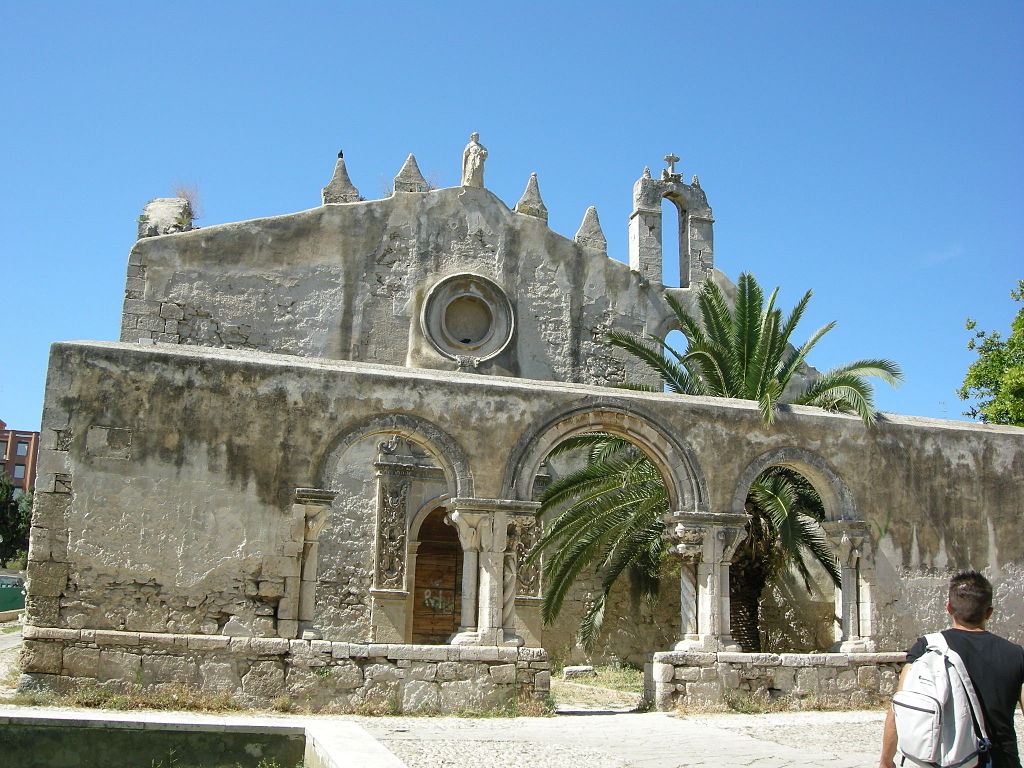
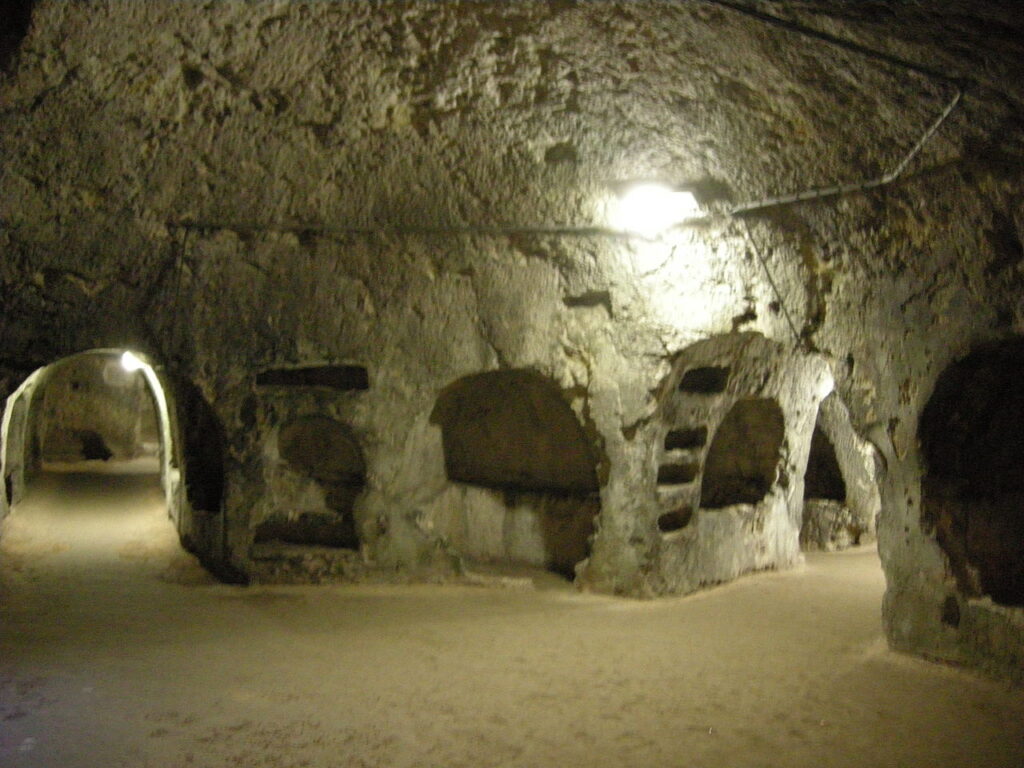
3. Shrine of Our Lady of Tears
The Sanctuary whose shape resembles that of a tear has no remote origins, it was in fact built in 1994 to celebrate the alleged tearing of an image of the Madonna in 1953 . The building is truly majestic, it is over 90 meters high and can accommodate up to 11,000 people.
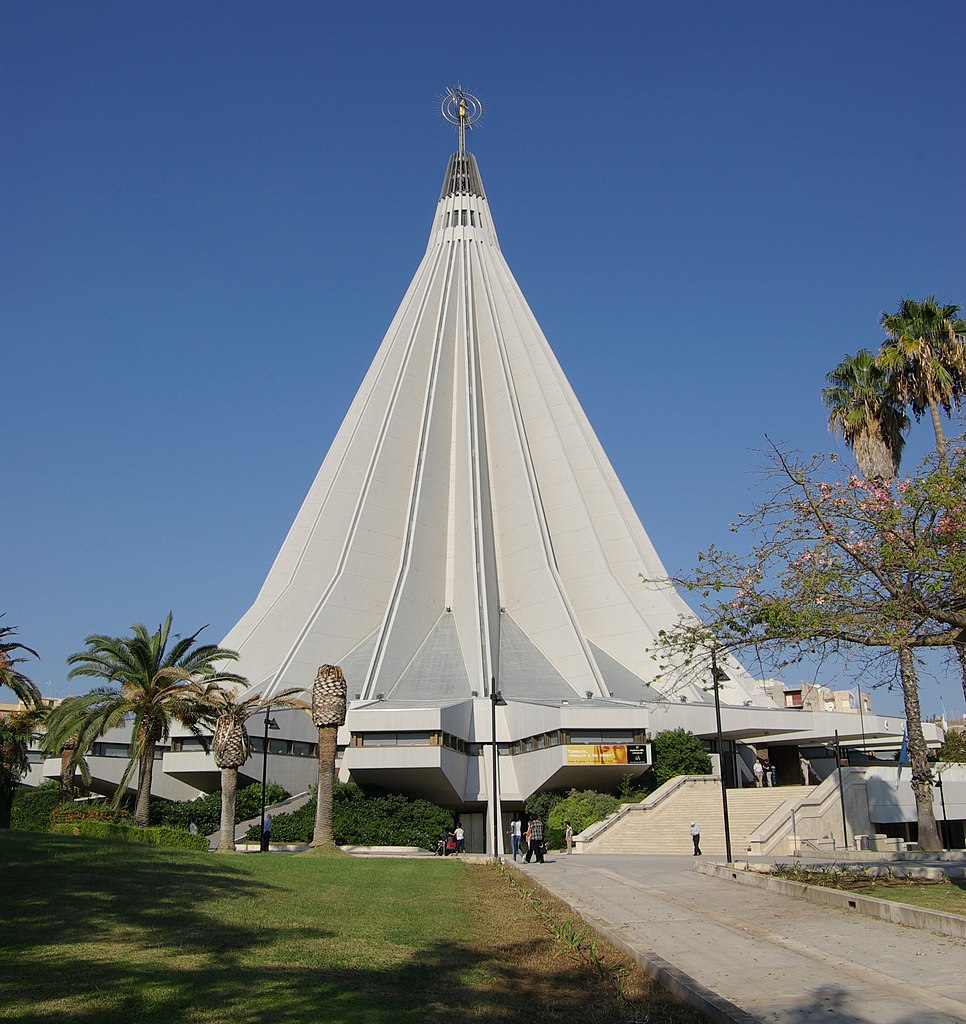
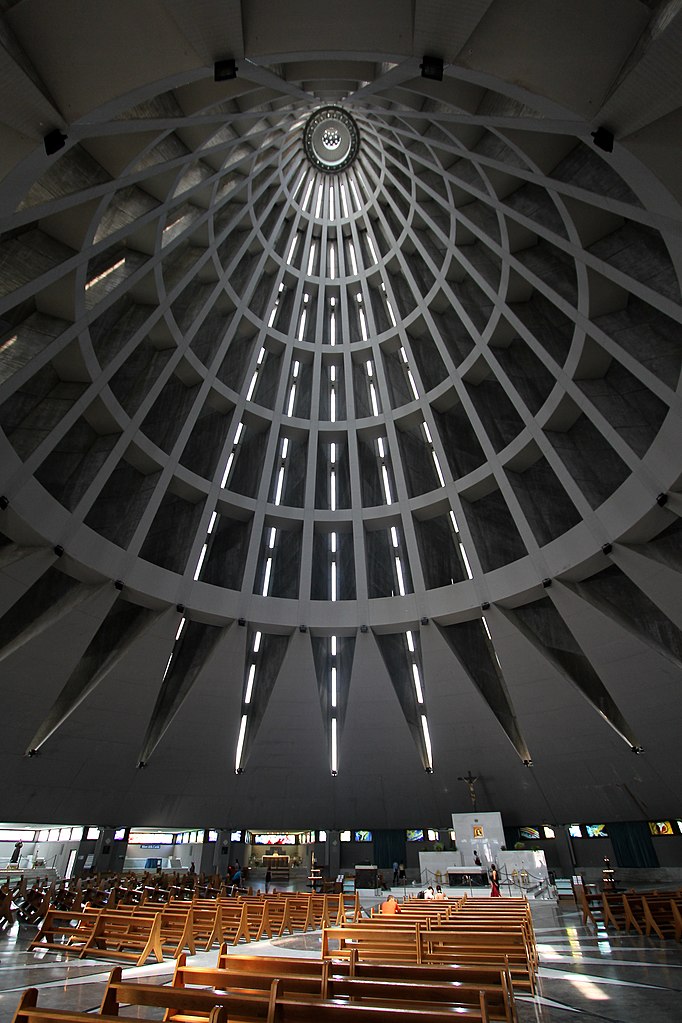
4. Paolo Orsi Regional Archaeological Museum
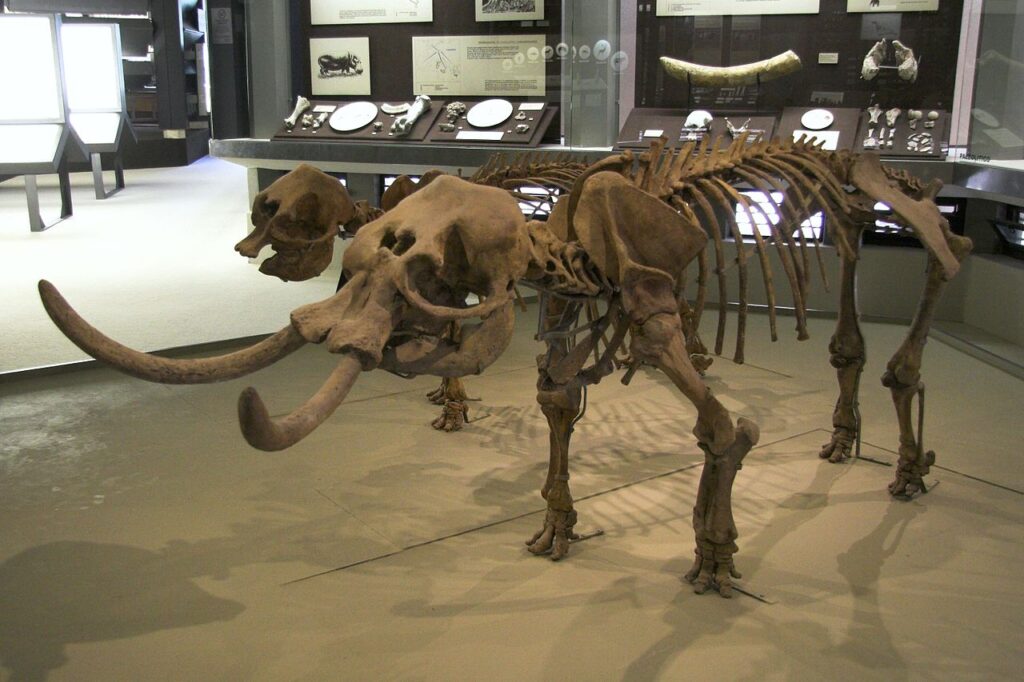
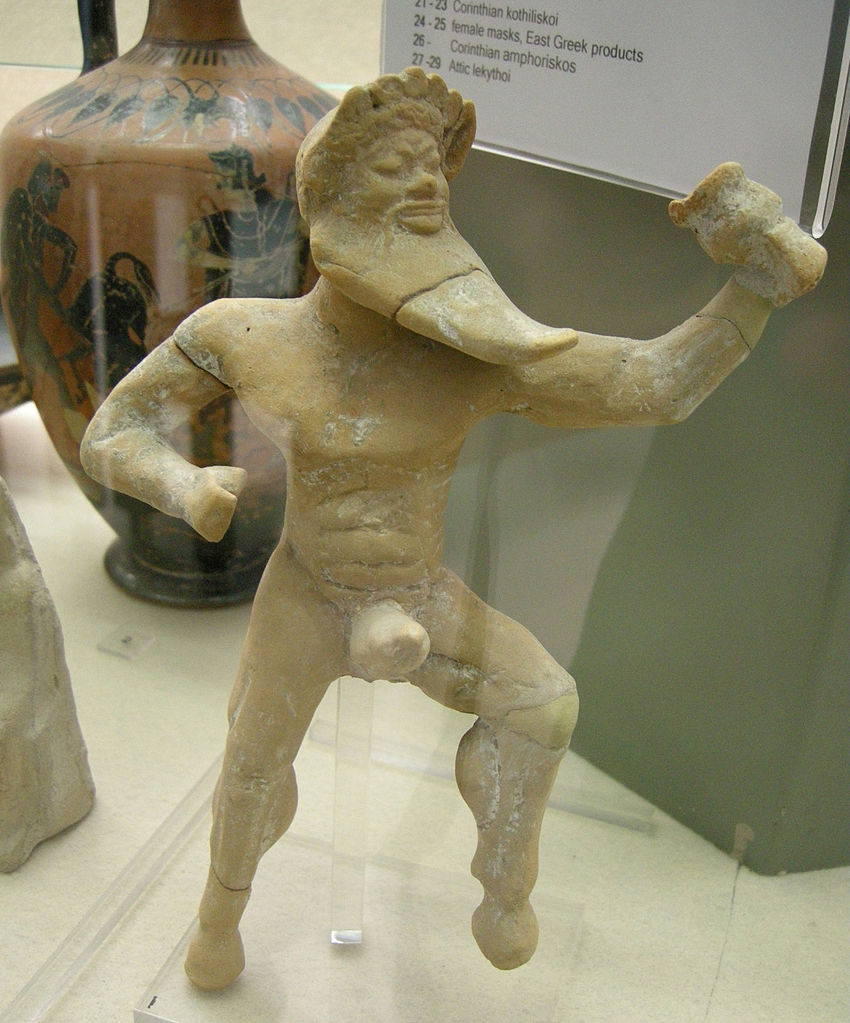
Inside Villa Landolina, a beautiful late 19th century villa. belonged to the noble Landolina family, (The building is now home to the museum offices, but you can walk in the beautiful garden around it), there is the Paolo Orsi museum.
In this museum you will find archaeological finds found in Syracuse and its surroundings, ranging from the prehistoric age to the early Christian age (Early centuries of Christianity) .
5. Latomia of the Capuchins
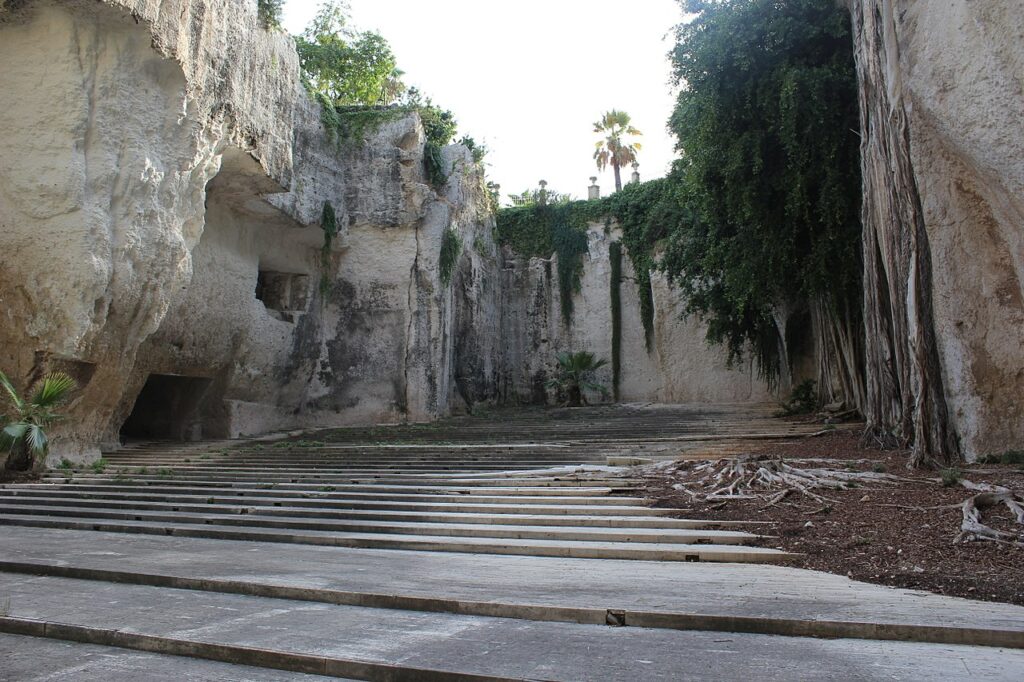
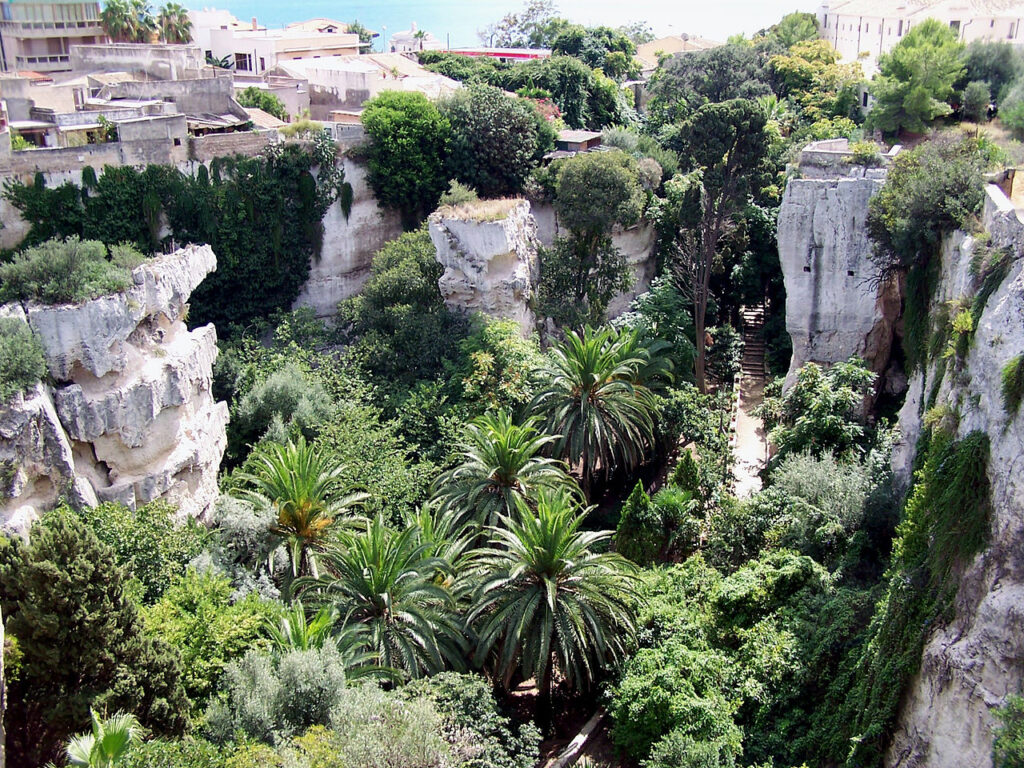
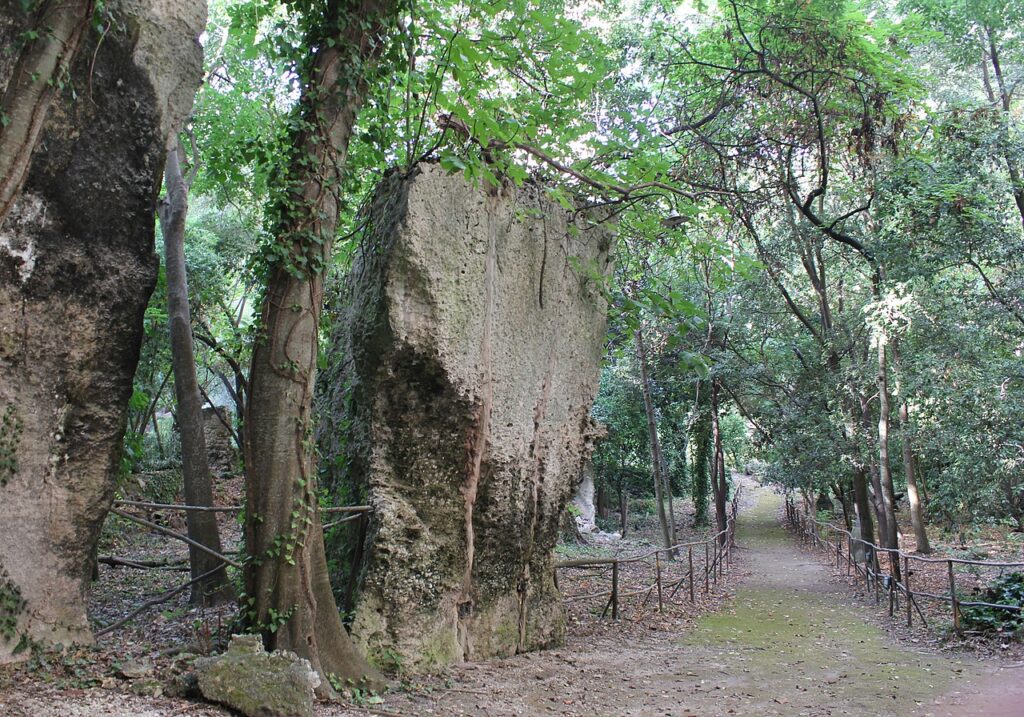
It is a quarry for the extraction of the typical white stone, used as early as the 6th century BC by the Greeks, for the construction of monuments and houses in Syracuse . It was also used as a prison and a place of worship, it is truly a fascinating place, which will allow you to take a little journey through time, more than 2000 years long. Today it is a green oasis, a place of peace where nature and history blend together. In fact, among the imposing rocks there is a beautiful garden, which was created by the Capuchin Friars to whom it was donated in 1582 by the University of Syracuse.
Macabre curiosity: Here the Athenians defeated by the Syracusans were locked up and left here to suffer from hunger and thirst. The survivors were then sold as slaves.
6. The ruins of the Greek Eurialo Castle
The name Euryalus comes from the Greek Euryalos, which means nail. Probably the Greeks gave it this name inspired by the saddle shape of the rock on which it was built.
It is certainly one of the most important Greek fortifications that have survived to this day. It was a real stronghold, commissioned by Dionysius I to protect Syracuse and built between 402 and 397 BC Indeed, he realized that this spot was quite vulnerable and fortified it. The ditches created as a defense system, deposits, tunnels, water cisterns and barracks can still be seen today.
You can also go down into the basement and walk through the tunnels dug into the rock and then experience this wonderful place firsthand, perhaps imagining the Syracusans who frightened ran along the tunnels to defend the fortress from the advance of the Athenians. Once you get back up, a beautiful panorama opens up before you with the sea in the distance and the surrounding Syracusan countryside.
Near the castle, near the parking lot, there is the Castello Eurialo Restaurant / Pizzeria, the food is good and also has a very nice outdoor terrace.
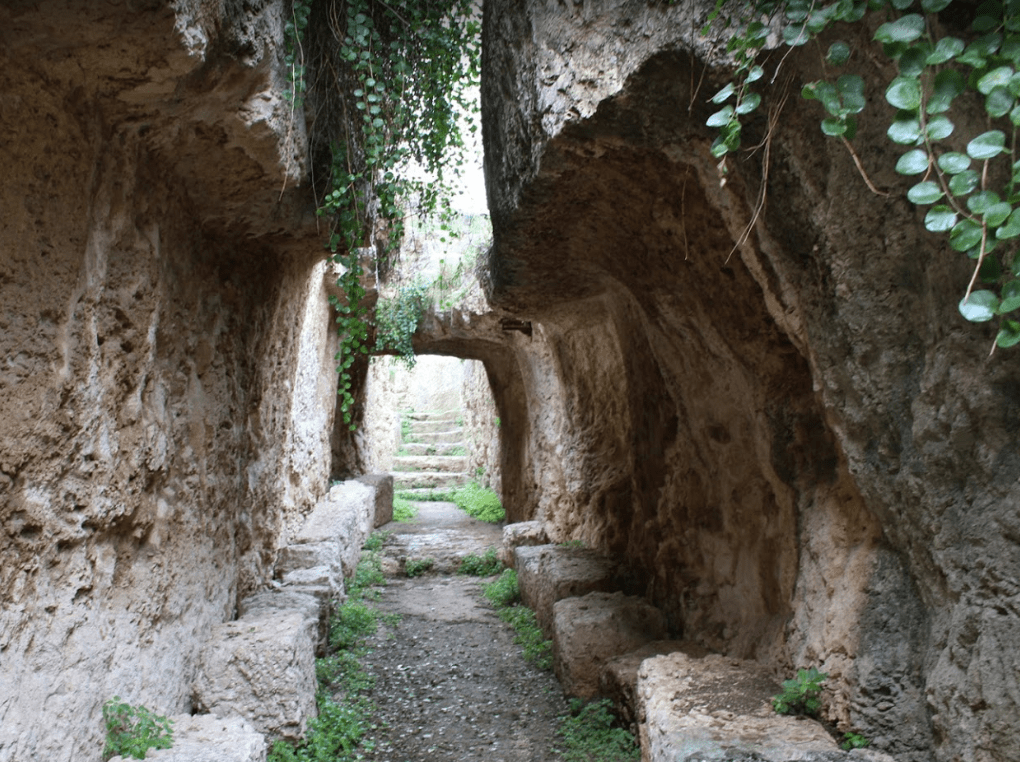
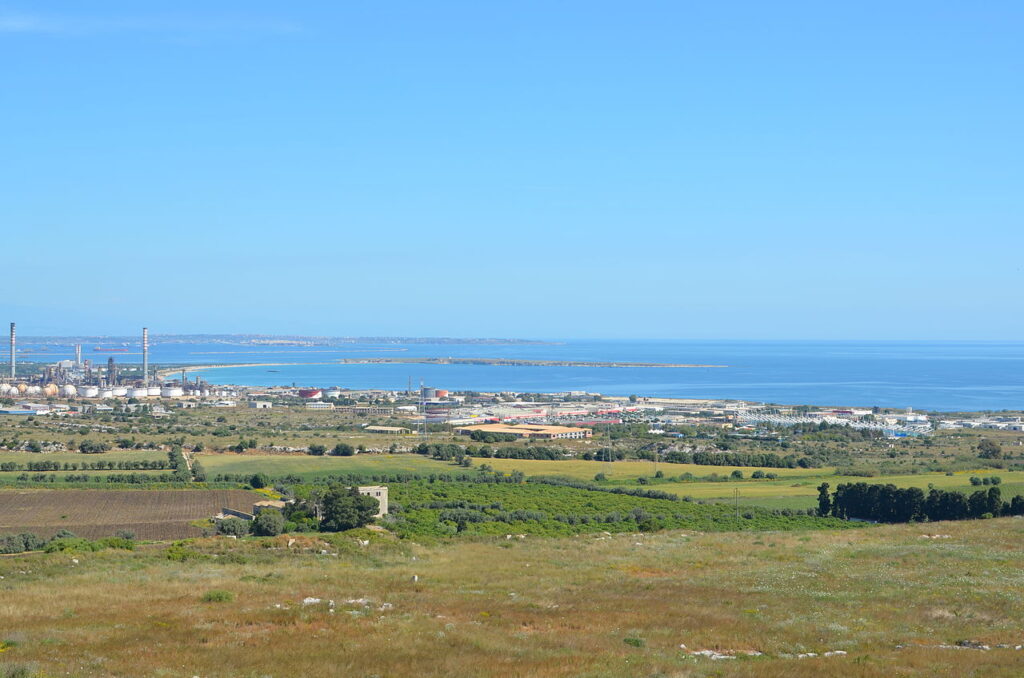
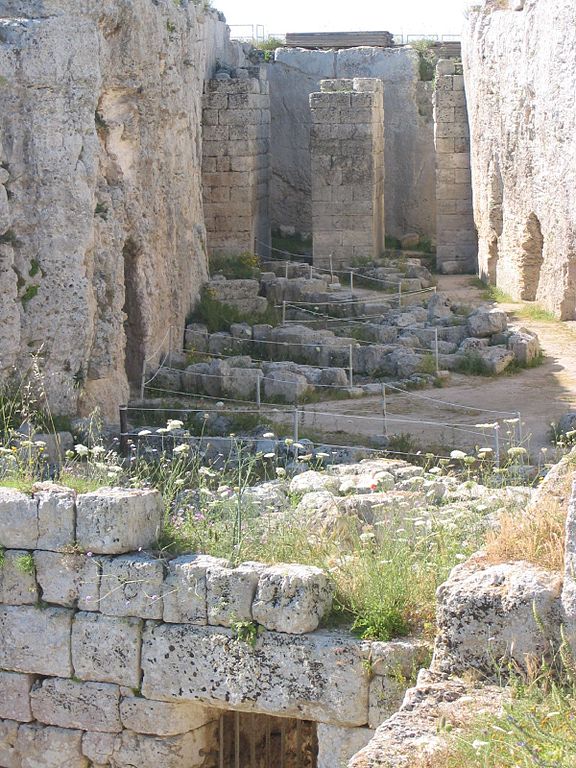
Interactive map of Syracuse – Points of interest in purple
To locate one in the area, click on the enlarge symbol at the top right of the map.
7. Ortigia – Syracuse historic center
Among the things to see in Syracuse there is certainly Ortigia, the historic center of the city located on an islet . It is accessed via a bridge, which welcomes you to this wonder, a World Heritage Site . If you arrive here by car you can leave it in the Talete car park and then continue on foot to discover Ortigia.

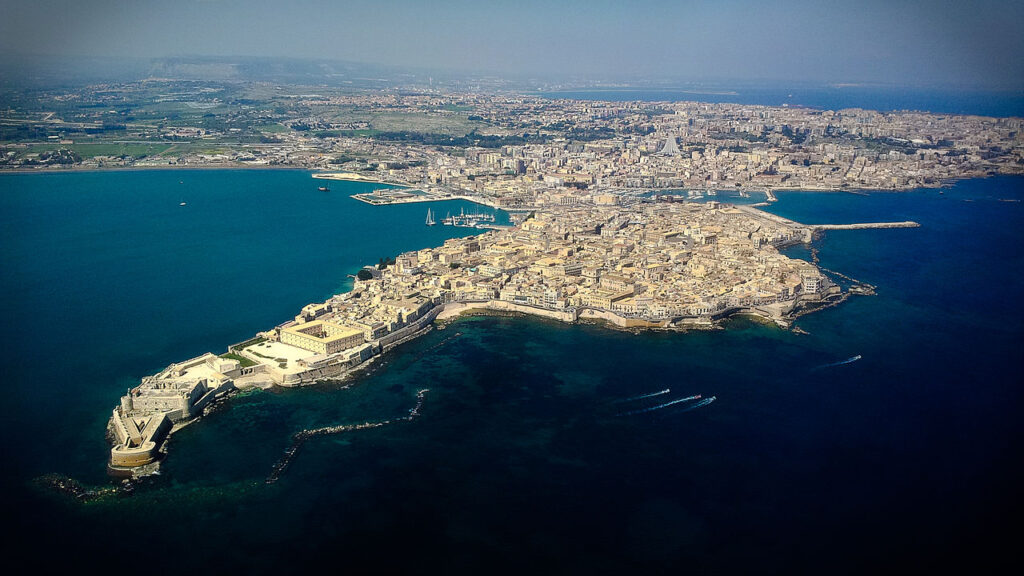
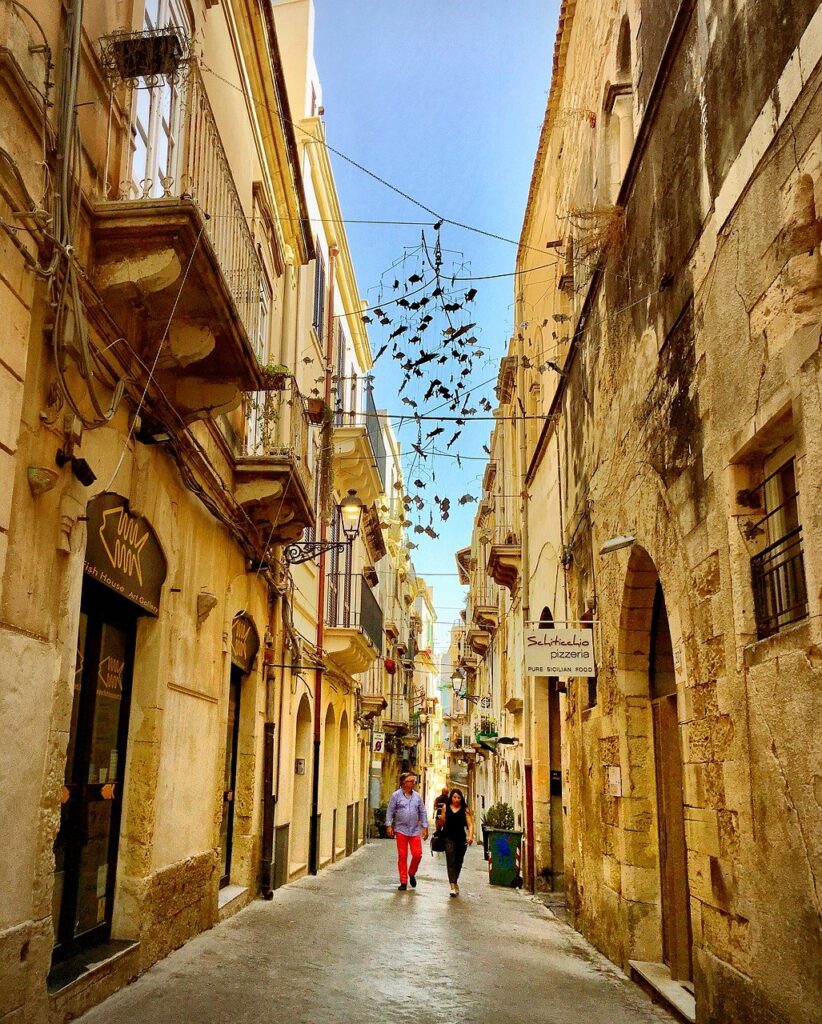
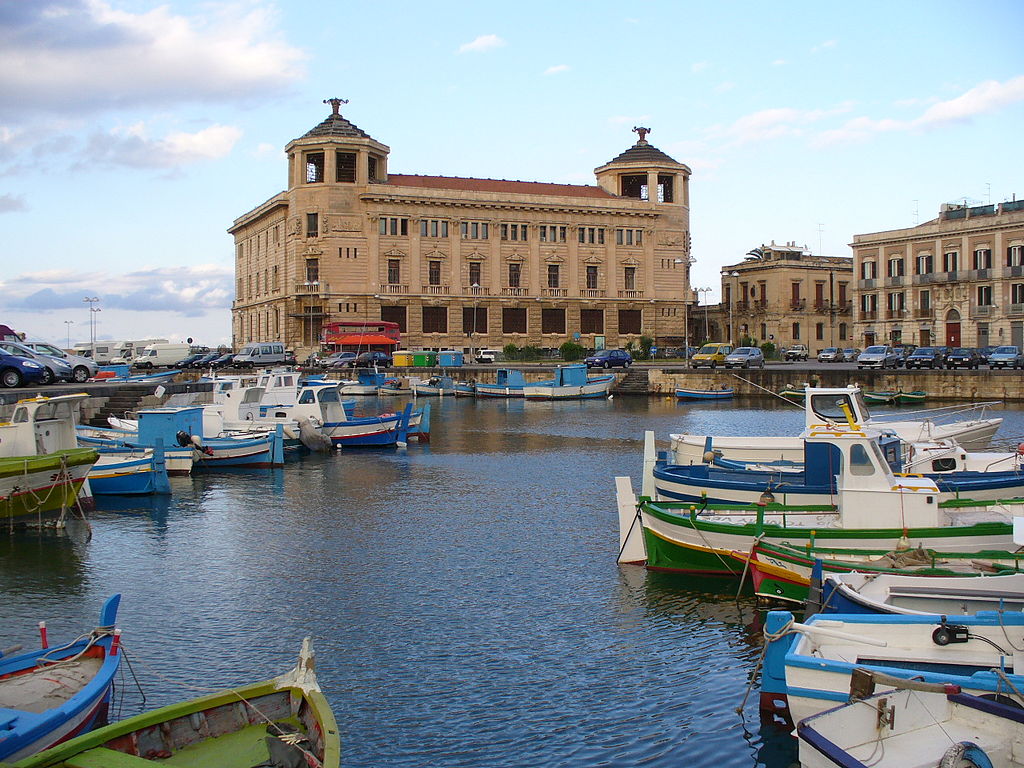
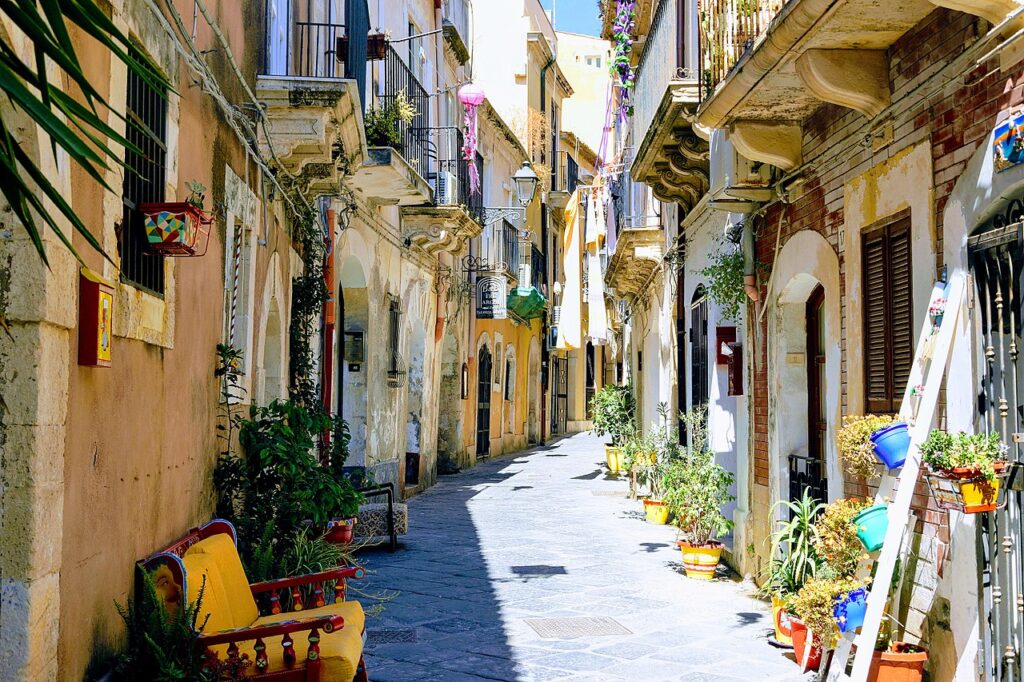
Temple of Apollo
Unfortunately, not much remains of the Temple of Apollo, think that it is one of the first theaters that the Greeks built in Syracuse (6th century BC). Today the columns are visible and also the dedication to the god Apollo, engraved on a step with the name of the architect who built the monument:
“Kleomedes made for Apollo (the temple), the son of Knidieidas, and raised the colonnades, beautiful works.”
The temple has a very long history, think in fact that it was used as a church by the Byzantines and Normans, as a mosque by the Arabs and even as a barracks by the Spaniards.
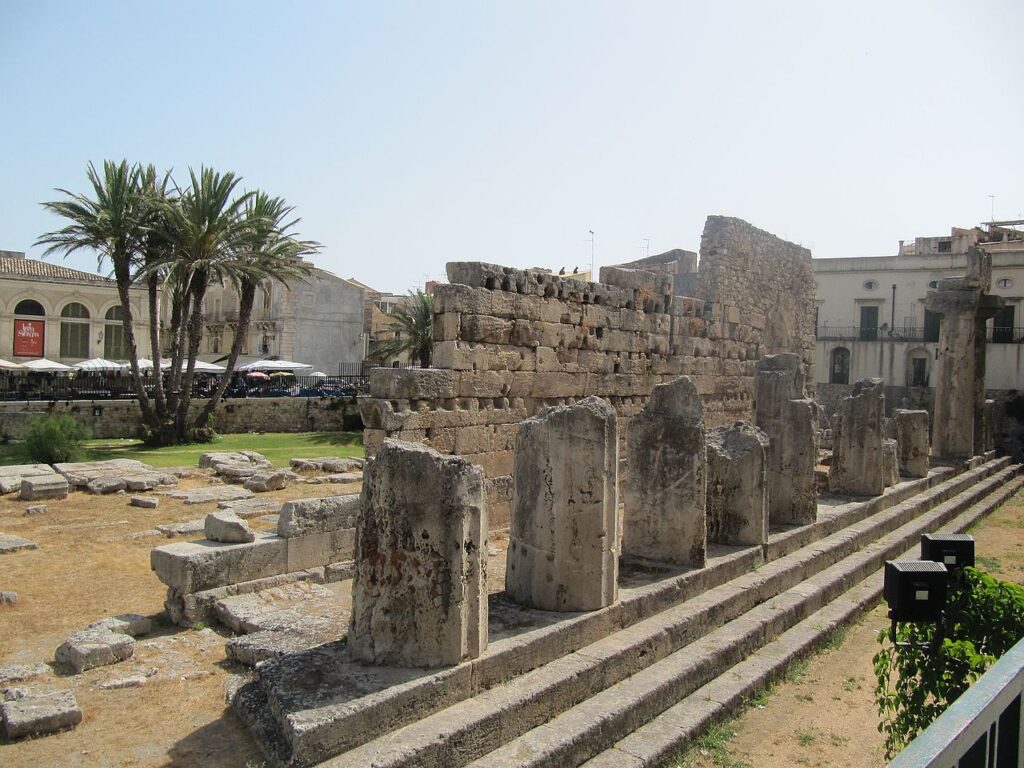
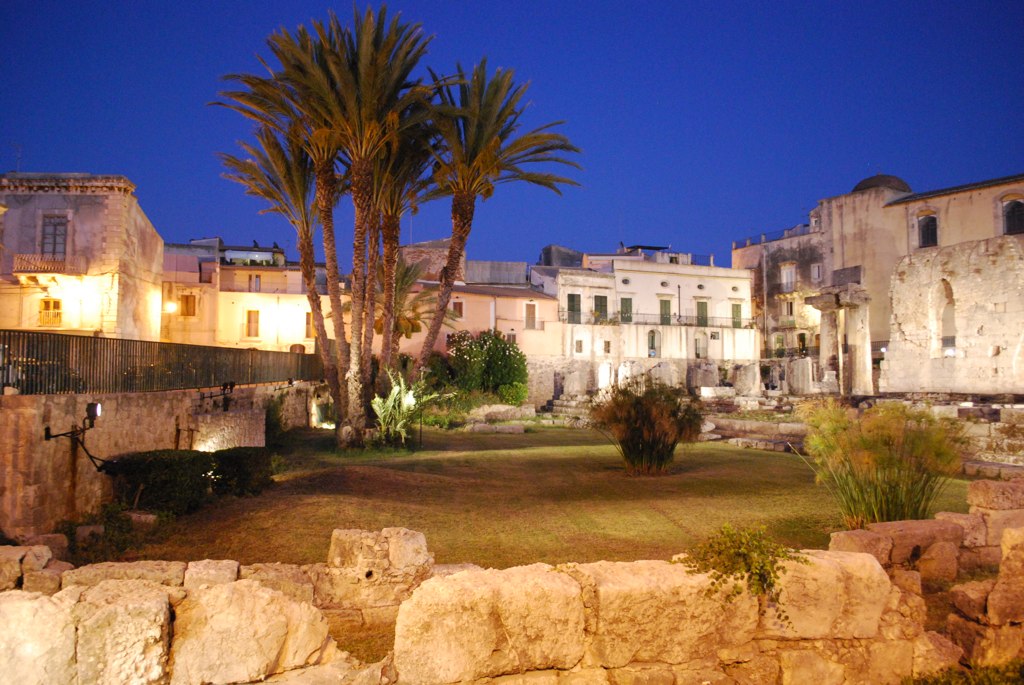
3D reconstruction of the Temple of Apollo in Syracuse
The waterfront and the beach of Ortigia
To see the Foro Vittorio Emanuele II promenade which is located near the Fonte Aretusa. A beautiful romantic walk between the sea and historic buildings, not to be missed. Here is also the Porta Marina, the ancient gateway to the city, built in 1500 by the Spaniards.
The promenade on the other side is also beautiful, between the Maniace castle and the Talete car park. This is also very scenic and with points of interest such as the Forte Vigilena (Spanish fortification), the baroque palaces overlooking the sea and the picturesque beach of Cala Rossa.
Other beautiful beaches can be found in the Plemmirio , a beautiful nature reserve a stone’s throw from Syracuse.
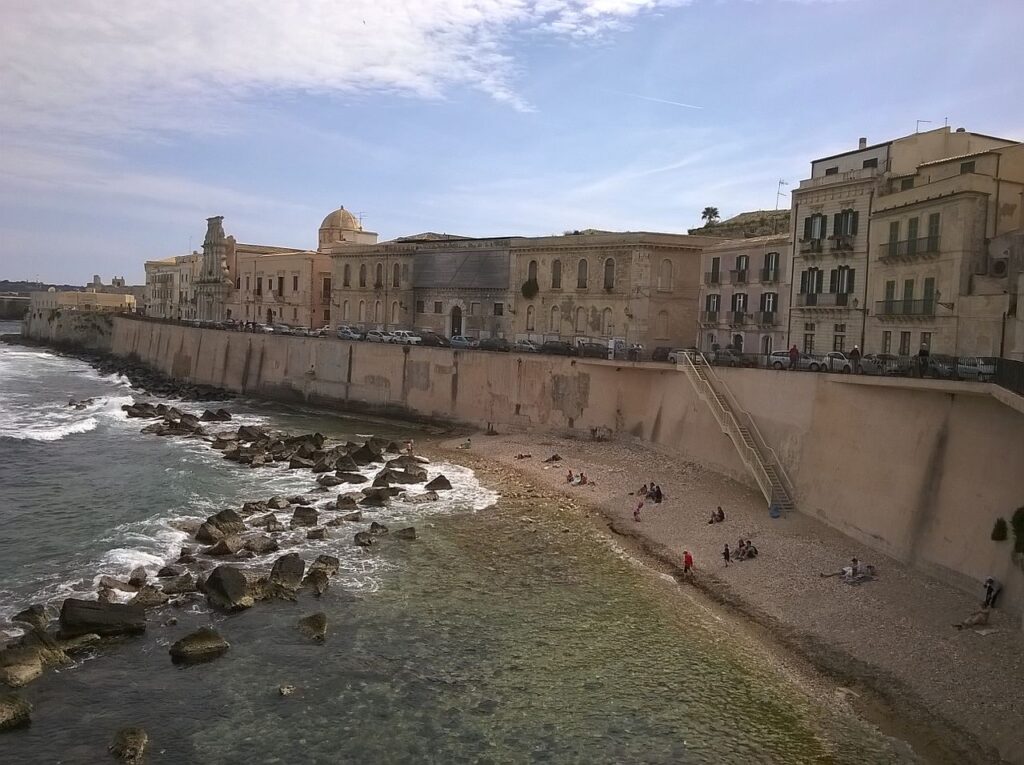
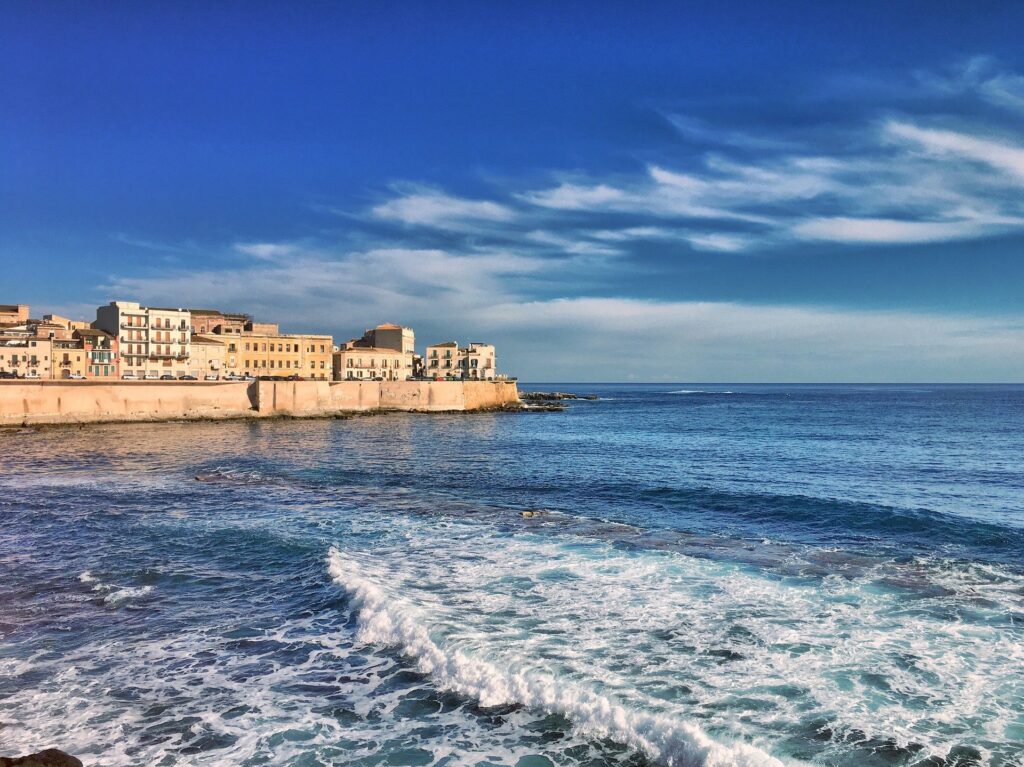

Cathedral Square in Ortigia
Piazza del Duomo is certainly the most beautiful place in Ortigia. This square is overlooked by splendid baroque palaces, the cathedral, the church of Santa Lucia alla Badia and there are even underground paths.
The Duomo is the result of more than 2,000 years of history. Just think that once there was the Greek temple dedicated to Athena, whose columns have been incorporated into the present structure and are still clearly visible, both from the inside and from the outside. In reality, already for the Sicilians it was a sacred place, in fact traces of their civilization have been found below the temple. The first church, which was then modified over the years, was built by the Byzantines. After the earthquake of 1693, the facade of the Duomo was rebuilt in Sicilian Baroque style in 1753. Timetables:
Near the Duomo is the Church of Santa Lucia alla Badia, dedicated to the Patron Saint of Syracuse. It was built in 1703 in Baroque style on the ruins of a 15th-century monastery destroyed in the 1693 earthquake. Nearby, there is access to an underground pathway formed by tunnels that reach as far as the harbor area of Syracuse. This place was used as a stone quarry, aqueduct, cistern and even as an air shelter during World War II.
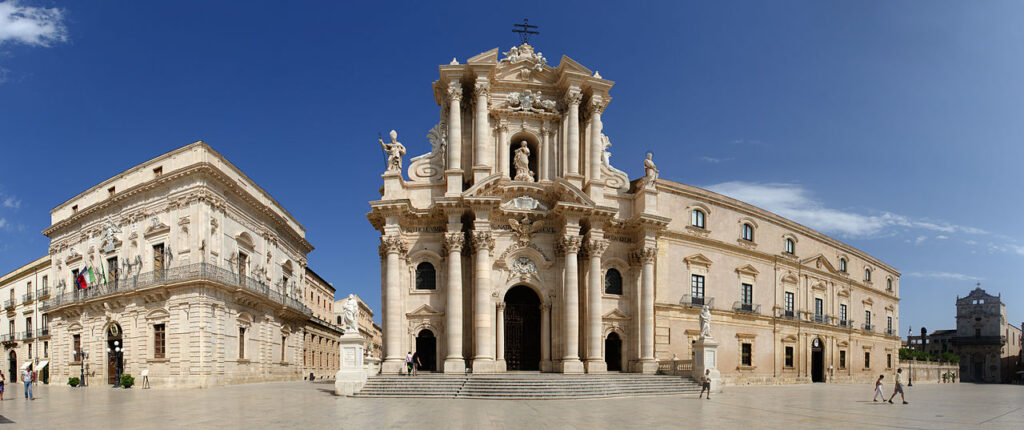
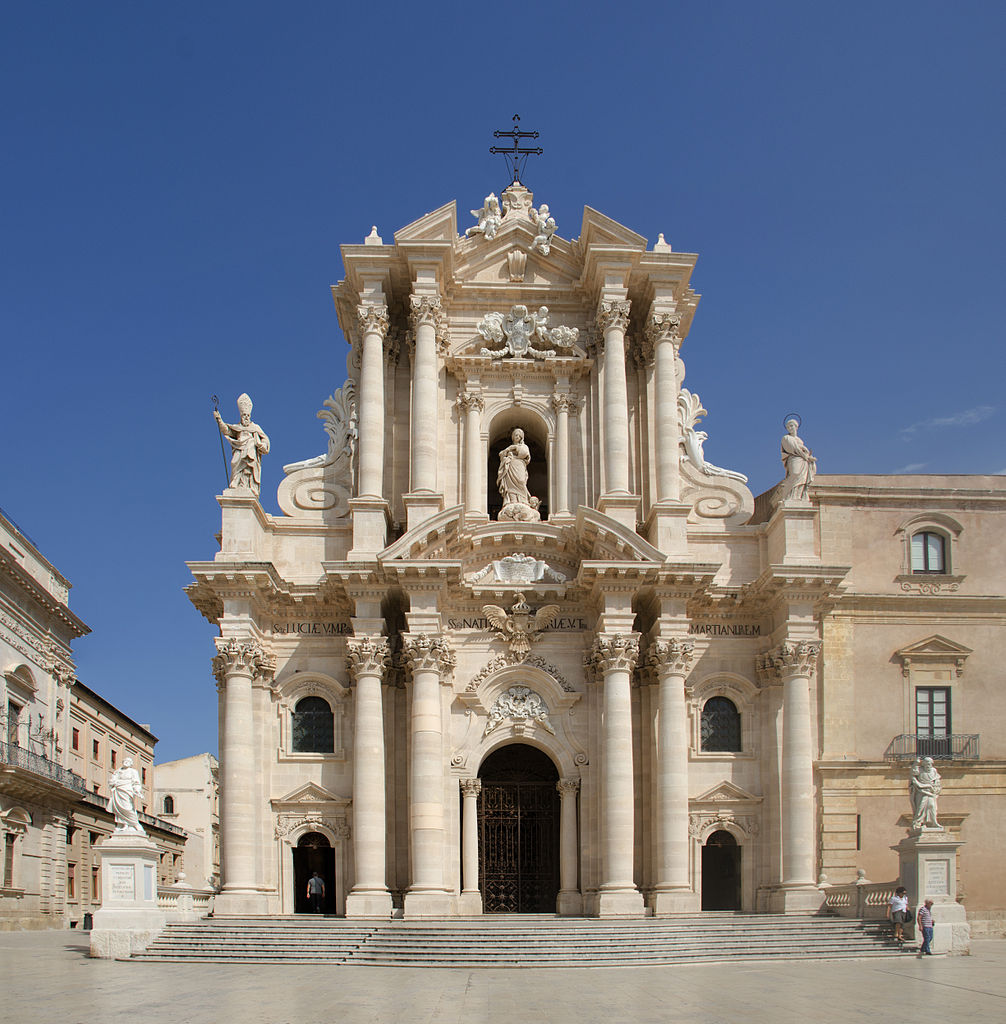
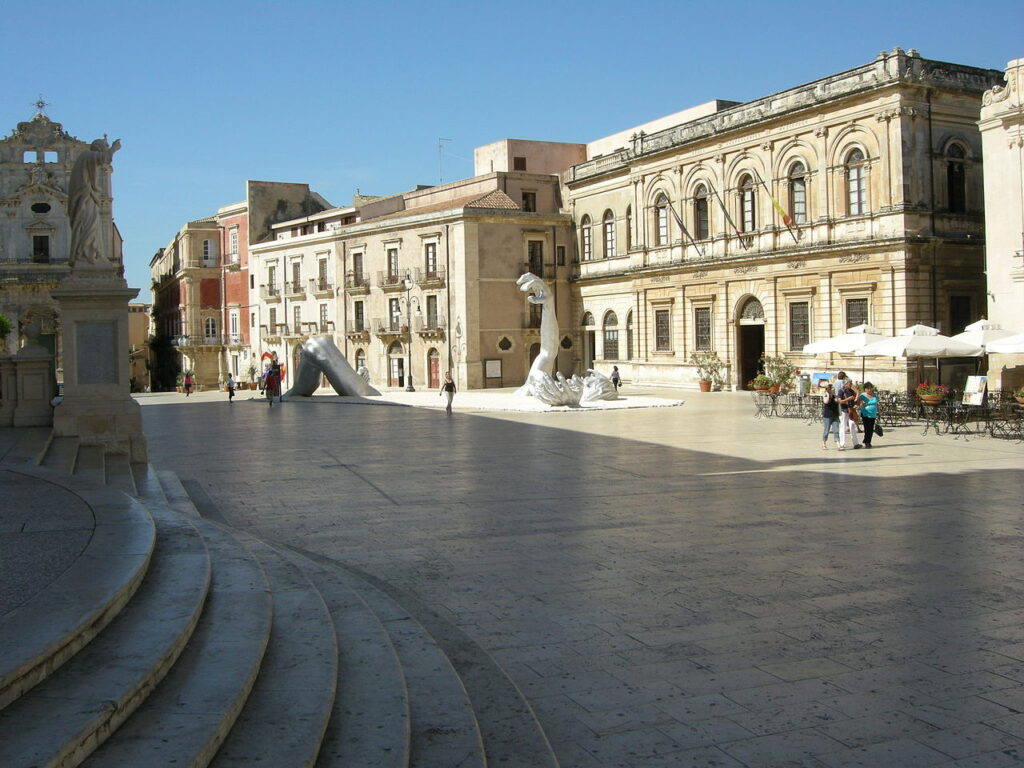
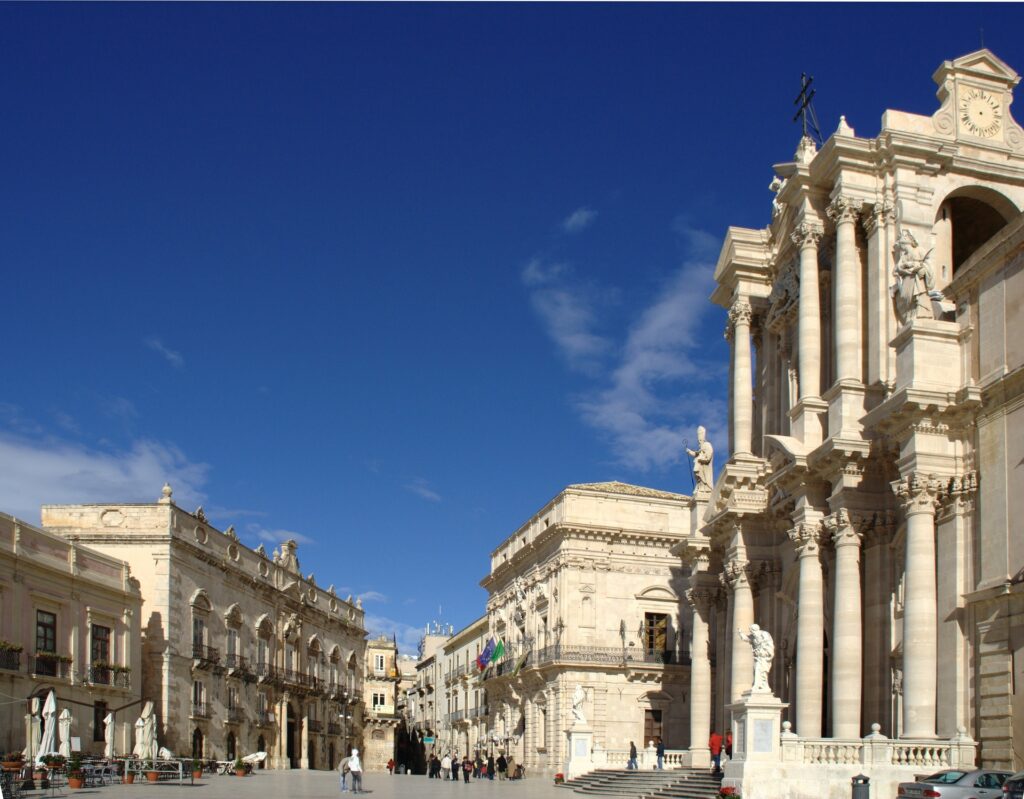
Bellomo Palace
Also worth a visit is the Palazzo Bellomo, built in the twelfth during the Swabian domination and then enlarged in Catalan style by the noble Bellomo family in the fourteenth century. The palace has been recently restored and houses a collection of paintings, tapestries, carriages, clothes, ancient books, religious artifacts and much more.
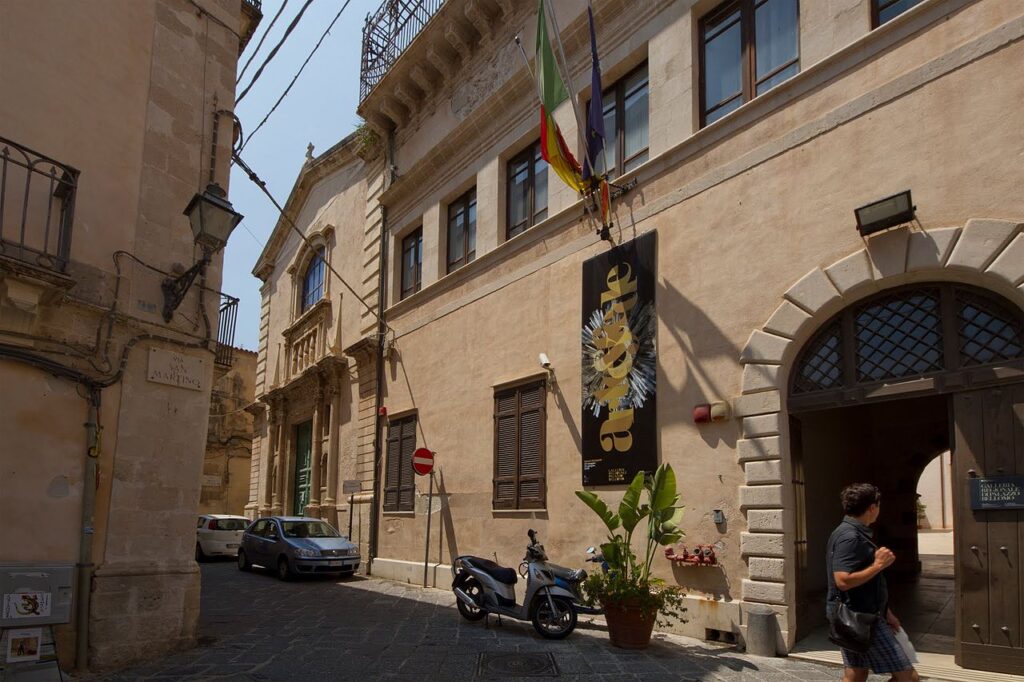
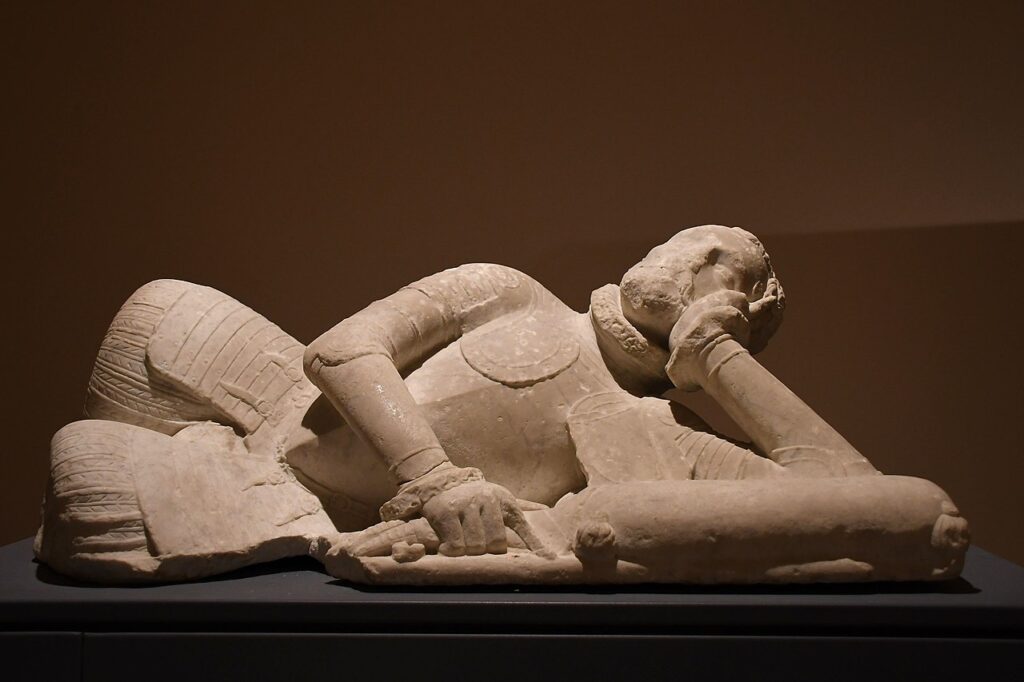
Sleeping Knight – Herbert Frank CC BY SA 2.0
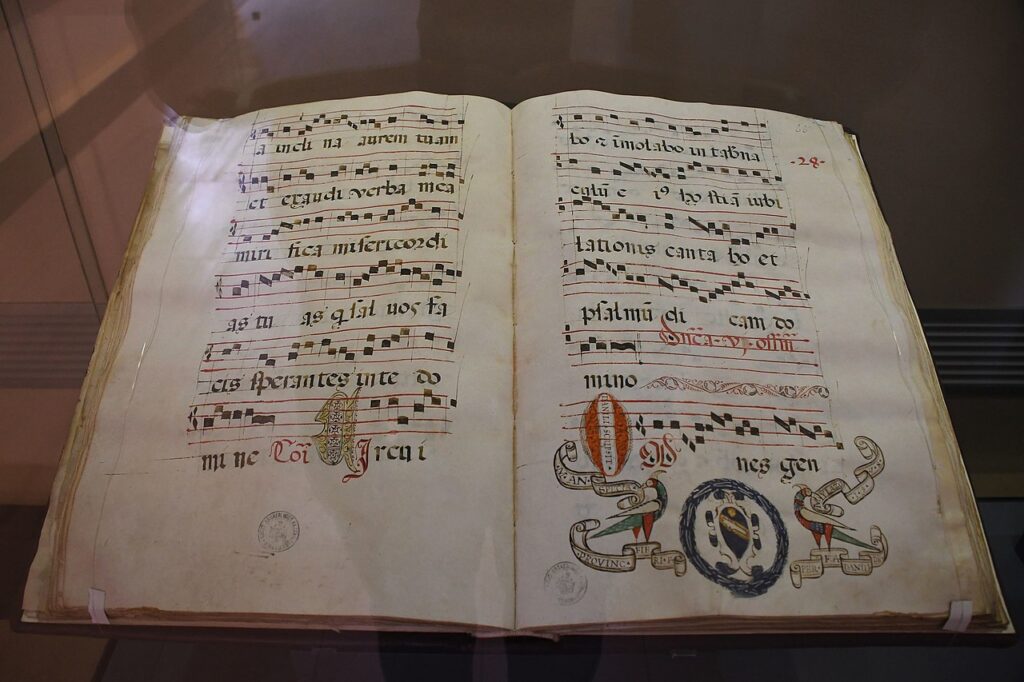
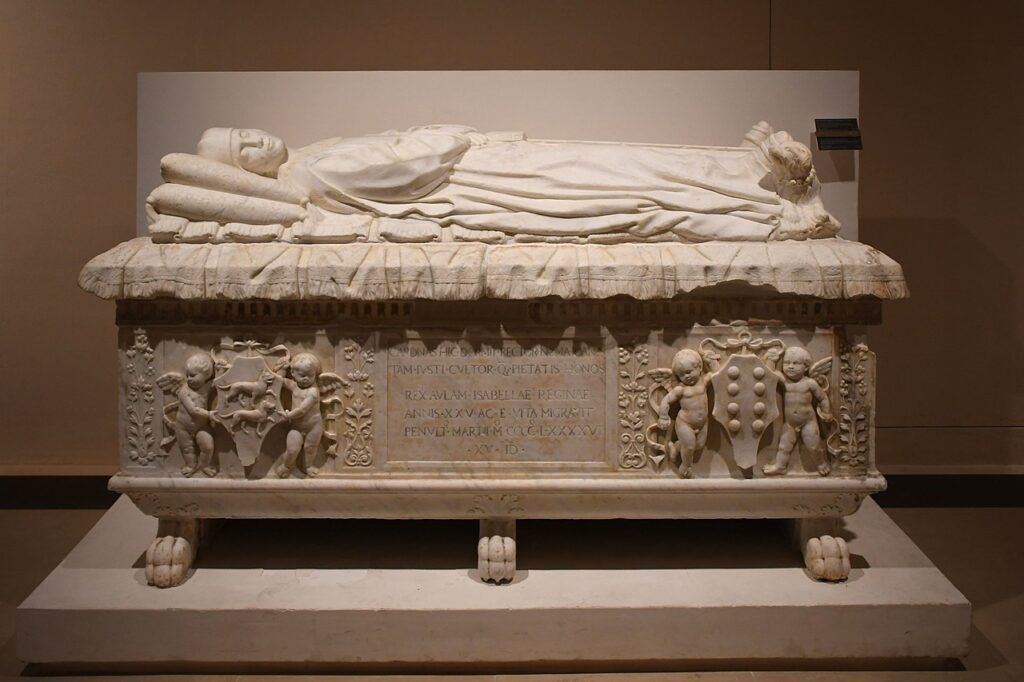
Source Arethusa
Fonte Aretusa is the famous spring of water that flows spontaneously from the Syracusan subsoil, a stone’s throw from the sea . In this brackish water, protected by a semicircular basin built in 1843, papyrus also grows. Near the source were also found ancient tanneries, where the Arabs worked the hides (Tanneries, which the Arabs also built in other places in Sicily, such as in the beautiful Ancient known ).
Small tip: This is one of the best places to admire the sunset in Ortigia.
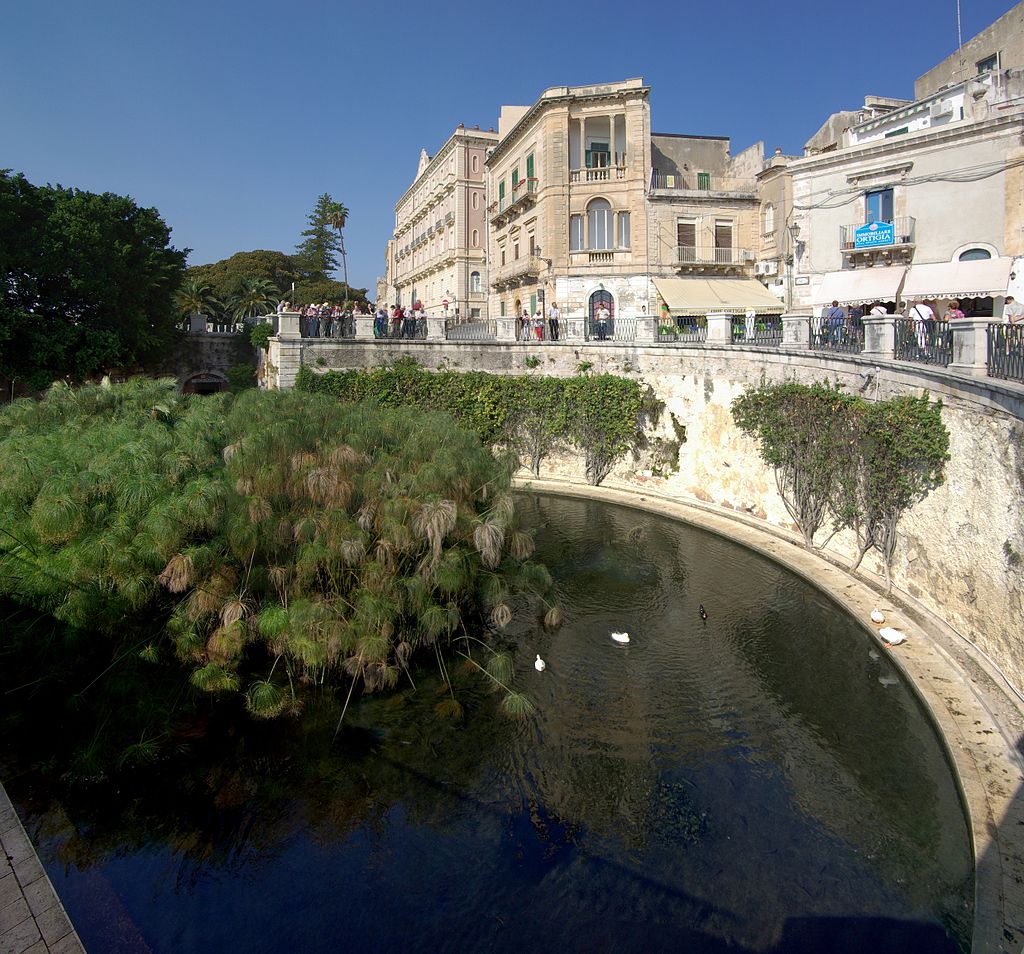
Maniace Castle
The beautiful Maniace Castle, overlooking the sea, was built by Frederick II in 1239, for the defense of Syracuse and was then modified over time . You can get there by walking through the wide Piazza Armi and along an ancient bridge, which, passing over a picturesque beach, introduces you to the fortress. You will then be able to visit some internal places of the fortress, stroll through the wide open spaces and admire the sea and Ortigia.
Curiosity: In some stone blocks there are still visible writings indicating the quarries of origin and the names of the workers who applied them.
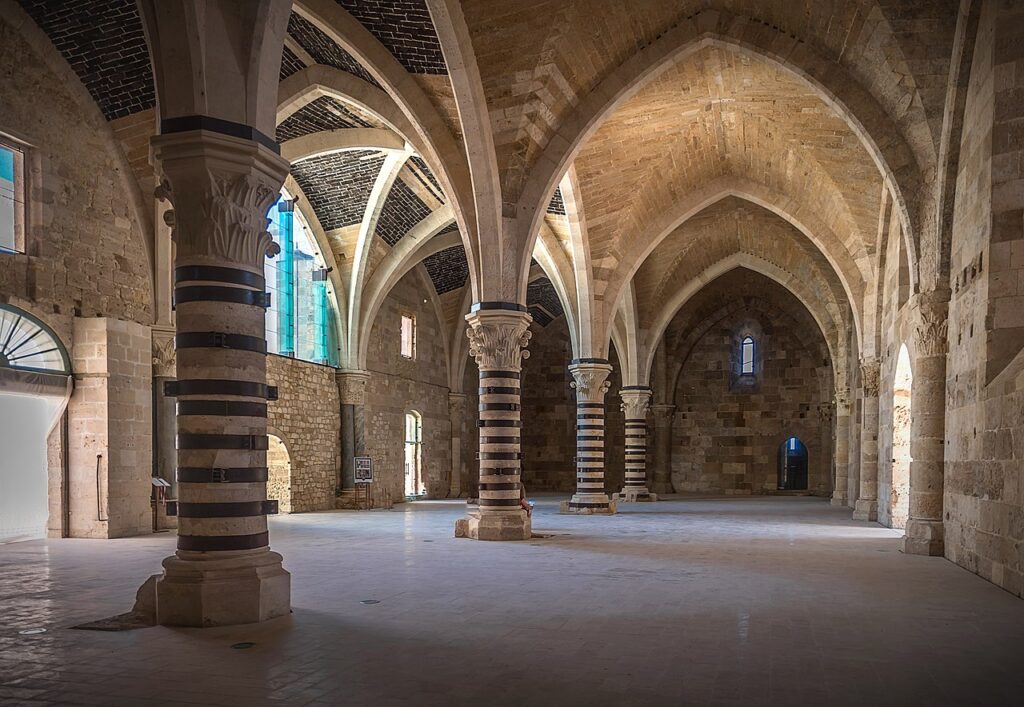
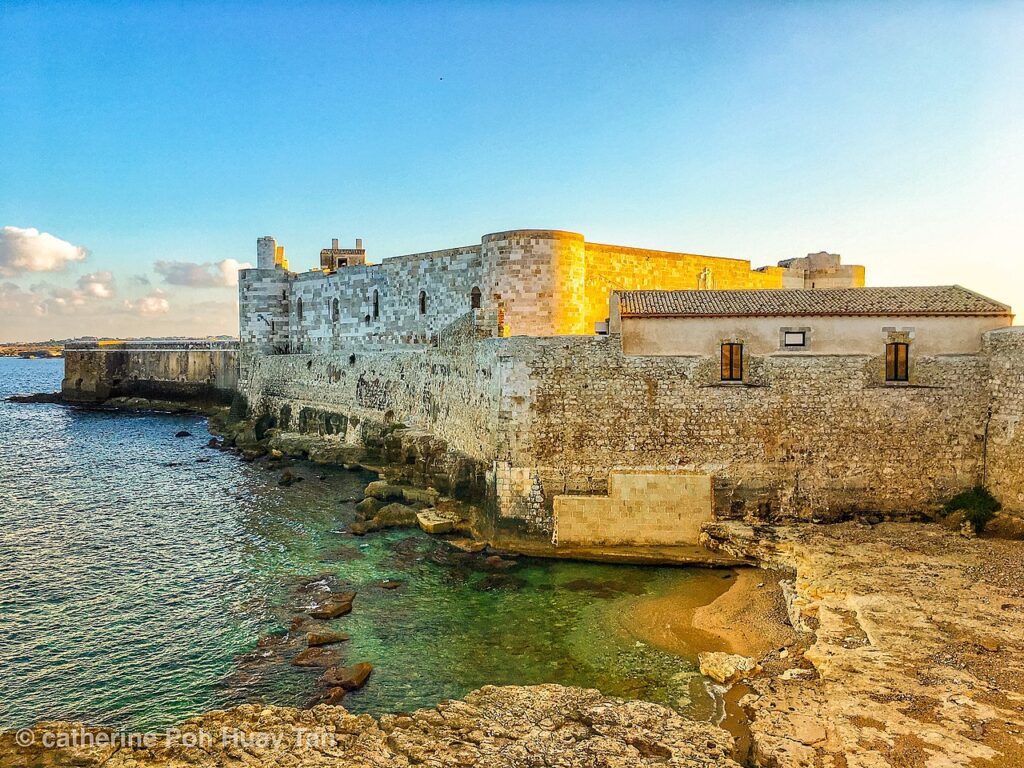
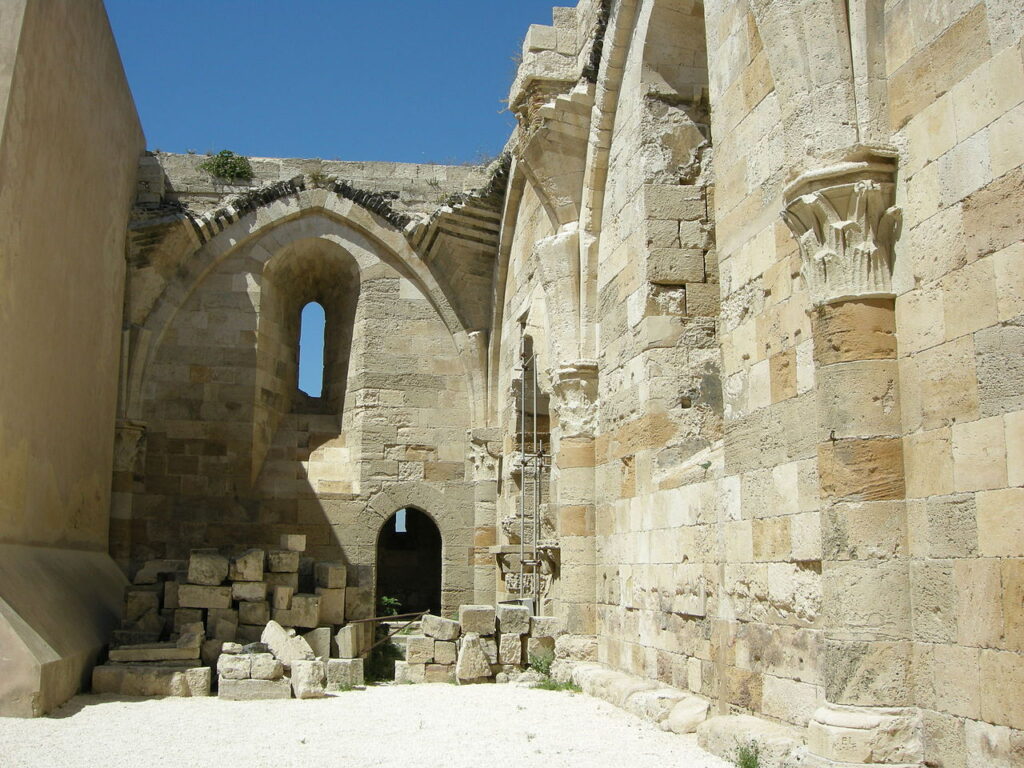
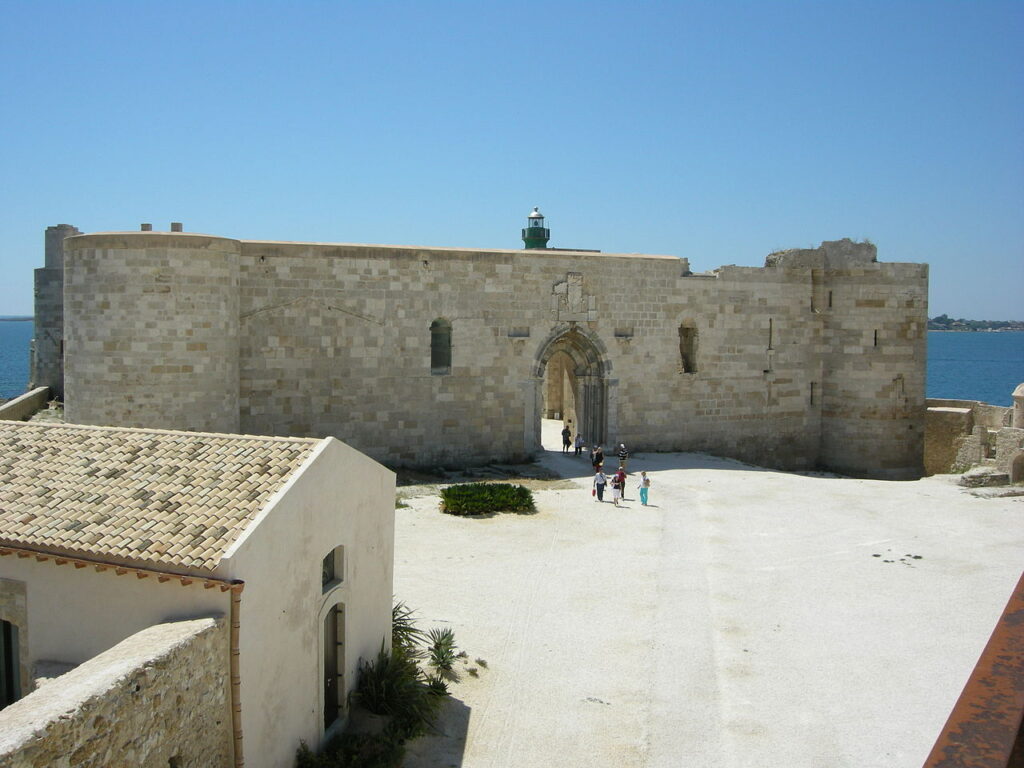

Papyrus Museum of Syracuse
The papyrus museum is located in the former convent of S. Agostino, a beautiful building overlooking the sea. It deals with the study and conservation of the papyrus culture, introduced here in the third century BC from Egypt (It was donated as a tribute by Pharaoh Ptolemy II to the tyrant of Syracuse Gerone II). In the museum there are papyrus objects created in the Pharaonic era such as mats and baskets and also small papyrus boats from Africa. The papyrus grows spontaneously in Ciane river , near Syracuse.

Top Secret Council – Jewish Bath Mikveh
In Syracuse it is also possible to visit an ancient Mikveh, a Jewish bath, which is very well preserved . It is not well known despite its enormous beauty and particularity. In my opinion it is definitely one of the places to see in Syracuse.
It is the oldest in Europe, dating back to the sixth century AD and consists of a system of tubs, in which the Jews performed ritual baths to purify themselves from sin. Today it is located below a hotel, in fact it was discovered during the restoration works.

Archimedes Square and the fountain of Diana
The fountain built in 1907 represents the huntress goddess surrounded by maids, mermaids and tritons . At its feet is the nymph Arethusa, depicted as she is transforming into a spring. It is located in the center of Piazza Archimede, built in 1878, overlooked by beautiful noble palaces.

Where and what to eat in Syracuse
Near Fonte Aretusa is the Mokrito Fast Casual Food bar / restaurant. Ideal for eating something fast and homegrown without spending a lot. Here also in the evening, with only 10 Euros, you can have a hearty aperitif with mixed frying, pizza and various cold cuts. Among other things, as previously written, in this area, the sunset is really very beautiful.
If you are looking for a good pizzeria with a nice setting, Schiticchio is recommended , near the Fountain of Diana. The interiors are very nice, well furnished and the walls are in stone, very special. In addition to pizzas, you can order burgers or meat.

If you want to discover the typical dishes of the area, here you can find an article on what to eat in Syracuse and surroundings .
Here instead you find the typical Sicilian dishes and products in general.
Interactive map of Ortigia – Points of interest in purple
To locate yourself once in the area, click on the enlarge symbol at the top right.

